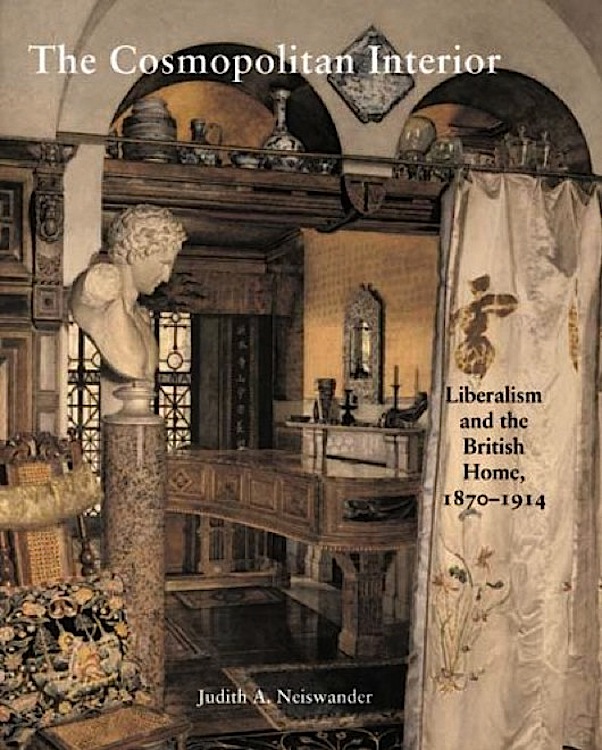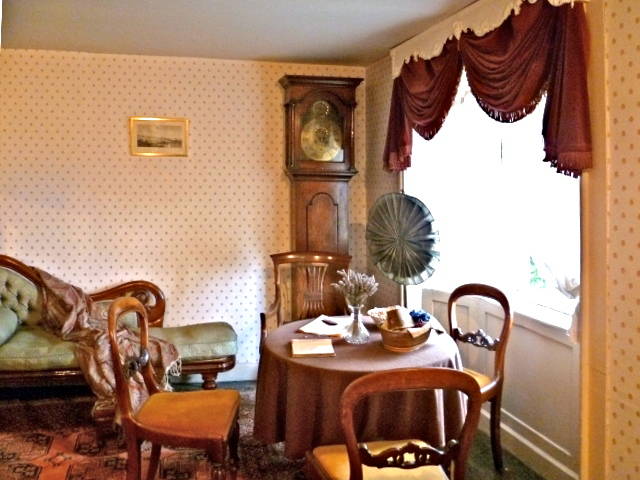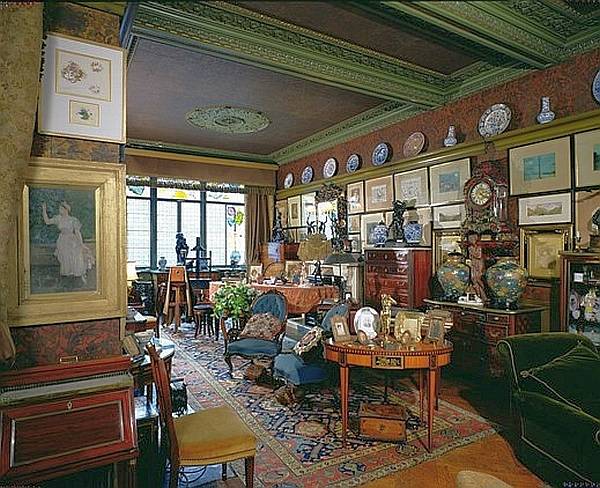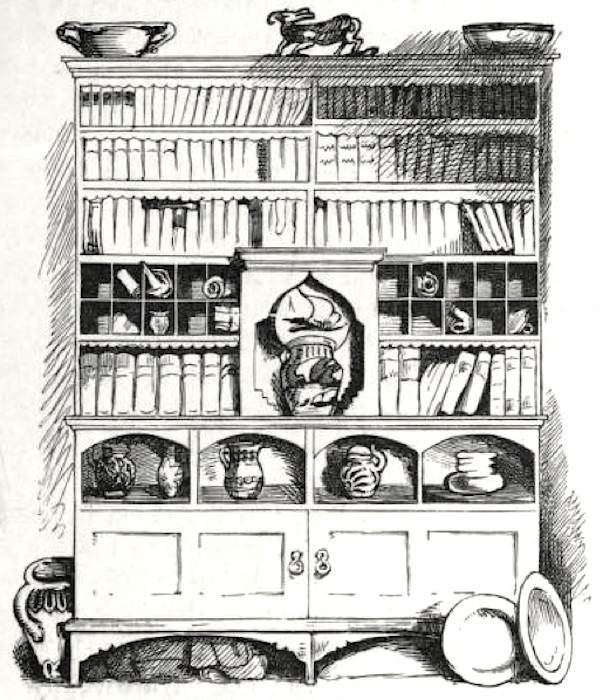This review is reproduced here by kind permission of the Historians of British Art, who first published it in their 2009/10 Winter Newsletter. The original text has been reformatted and illustrated for the Victorian Web by Jacqueline Banerjee, who has also added captions and links. Click on the images for larger pictures and more information where available.

What a difficult word "liberal" is! From "the liberal arts" to "a liberal attitude to (say) delinquency," where is the continuity? Somebody who is "liberal with money" is not necessarily a "liberal" in the economic sense, still less a member of the (British) Liberal Party. Heavy tomes have been written by political historians to try to identify that elusive notion, "liberalism." Anybody with some knowledge of nineteenth-century British society senses what "liberalism" was not — though there would not be general agreement on what it was, especially as there seems to be little in common between the "laissez-faire" liberalism of, say, Cobden in the 1840s and the "interventionist" liberalism of Lloyd George in 1906-11.
Judith Neiswander provides a novel angle of approach by tackling "liberalism" (arguably in its maturity and decline) from the perspective of the "lesser arts," as William Morris called them in a conference delivered before the Trades Guild of Learning on 4 December 1877 — more especially home decoration (as opposed to architecture, one of the "noble" arts, of course). For the readers who have their doubts about the connection between "liberalism" (and "Liberalism", its party political version in Britain) and this "lesser art," Neiswander has a marvellous quotation by William Ewart Gladstone (Liberal Prime Minister, 1868-74, 1880-85, 1886, 1892-94) in 1876: "Wealth is often amassed, not only to the diminution, but to the positive increase of that ingrained and hardened vulgarity, which is even aggravated by the sort of shine it occasionally wears upon its surface" (75). As a denunciation of "Victorian art," this was not even bettered by William Morris and his friends (who are difficult to integrate into the narrative, since they execrated the Liberal Party and the Lib-Lab MPs who practiced "class collaboration" — but then Walter Crane receives far more than passing mention in the book).
Was "the philosophy of Utilitarianism" really "on the wane" by the 1870s, as Neiswander argues (26)? Many would say that the successful policies of Joseph Chamberlain in Birmingham in the late nineteenth century were directly inspired by Bentham's and Chadwick's cult of efficiency. Moreover, there then seems to be a contradiction in ascribing to the archetypal Utilitarian John Stuart Mill (whose repudiation of social conformity is excellently discussed on pp. 38-41) a prominent role in shaping taste following the success of the various editions of his On Liberty (1859): "The influence of Mill's concept of individuality is vividly apparent in the decorating literature" (41). Also, whole libraries have been written on the Feminist and/or Suffrage movement, notably its stormy connections with the Liberals ("including Gladstone himself," 83), and the chapter on "The Cosmopolitan Interior and the Empowerment of Women," however welcome, clearly shows the loose ties between the two movements if only because, as the author reminds us, "suffrage for women on the same terms with men was not enacted until 1928, and then under a Conservative government" (83).
It is therefore arguable that the central concept of the undertaking is a false good idea since "liberalism" is such an elusive notion. Even Neiswander's attempt to restrict her study to the framework of "cultural liberalism" founders when she includes in it "the leading role of an elite of highly refined individuals" (8), because this would equally well apply to Tory grandees of the time. Founding a comparison on such loose foundations was bound to be problematic. And yet the book is undeniably a "good read" if we forget about "liberalism" and see it as drawing a parallel between the general evolution of mentalities and that of the advice on home decoration on offer between 1870 and 1914.



Three rooms in different styles. Left to right: (a) Betsey Trotwood's old-fashioned, simple, comfortable parlour recreated (from its description in David Copperfield, 1849-50) at Dickens House, at Broadstairs on the south coast. (b) The Punch cartoonist Linley Sambourne's elegant but cluttered late-Victorian drawing room in Stafford Terrace, Kensington. (c) Aristocratic splendour (heavy drapes, statuary, ferns etc.) at Sandringham House, Norfolk, one of the royal residences.
The author has evidently left no stone unturned in her search for documentation: the range of contemporary books, catalogues and magazines consulted is extremely impressive, and the publishers have (commendably) been very generous in their allowance of reproductions — some in colour, and most not commonly seen elsewhere. There are many generous quotations, all of them relevant, many excellent, which "speak for themselves." Again, many raise vast subjects, notably those by Bagehot on the French and British aristocracies (27), in The British Architect on Puritanism versus the "lust of the eye" (28), by Fred Miller on style and individuality (37), by Moncure Conway on internationalist culture (54), by Rhoda Garret on the "woman's sphere and woman's mission" (100), by Crane on colours (124), by Lewis F. Day on "imitation" (142), by J.H. Elder-Duncan on American "artistic horrors" (154) and on "cottage" furniture (173), or in The Artist on Art Nouveau as "repugnant and detestable" (151). Judith Neiswander makes extremely good use of these quotations — exploiting her primary material to the full in her searching commentaries. The book is also full of useful incidental remarks: I personally learned that "the first recorded installation of electric light in a private home was in December 1880" (64)

"Books may be considered an ornament": in Chapter VI of her book, The Art of Decoration (1881), Mrs H. R. Haweis gives specific advice on colour, textiles and furniture for the progressive and aspirational household. This was one of many contemporary books on home decoration, soft furnishings etc.
Neiswander's general argument, as derived from her understanding of these sources, is that during her chosen period of study, "writers on decoration stepped aside from involvement with the political and social issues of the day" (181). This is a highly controversial thesis, which would call for much further research before it was generally accepted, but as such it is extremely stimulating for the educated reader, and not only for that rare breed which combines an extensive knowledge of the intricacies of nineteenth-century British social stratification and political alignments with a strong interest in the late-Victorian and Edwardian decorative arts, notably for the home. The state-of-the-art Select Bibliography will be found extremely useful in this respect, especially the extensive list of books and periodicals of the time in the Primary Sources section. The proof-reading is of the highest quality — not a single error was detected. So is the trade binding: a proper binding with sewn sections, not glued sheets that get loose with frequent consultation, which is what the book is destined for, since all University Libraries will naturally want to have a copy, like anybody interested in British Art. A very pleasant book to read, both physically and intellectually, even if (or because?) one has to keep a watchful eye on its social and political arguments.
Links to Related Material
- The Triumvirate of the English Liberal Party — A Contemporary View
- What was Victorian taste, really?
- Victorian clutter
- A Review of Kathryn Ferry's The Victorian Home
- A Review of Deborah Cohen's Household Gods
Bibliography
Book under review: Neiswander, Judith A. The Cosmopolitan Interior: Liberalism and the British Home, 1870-1914. Published for the Paul Mellon Centre for Studies in British Art. New Haven & London: Yale University Press, 2008. viii+216 pages. Hardback, £35.00. ISBN-10: 0300124902 and ISBN-13: 978-030012490.
Morris, W. "The Lesser Arts," A Conference delivered before the Trades Guild of Learning, December 4, 1877. In Hopes & Fears for Art: Five Lectures by William Morris. London, 1882.
Created 4 February 2014